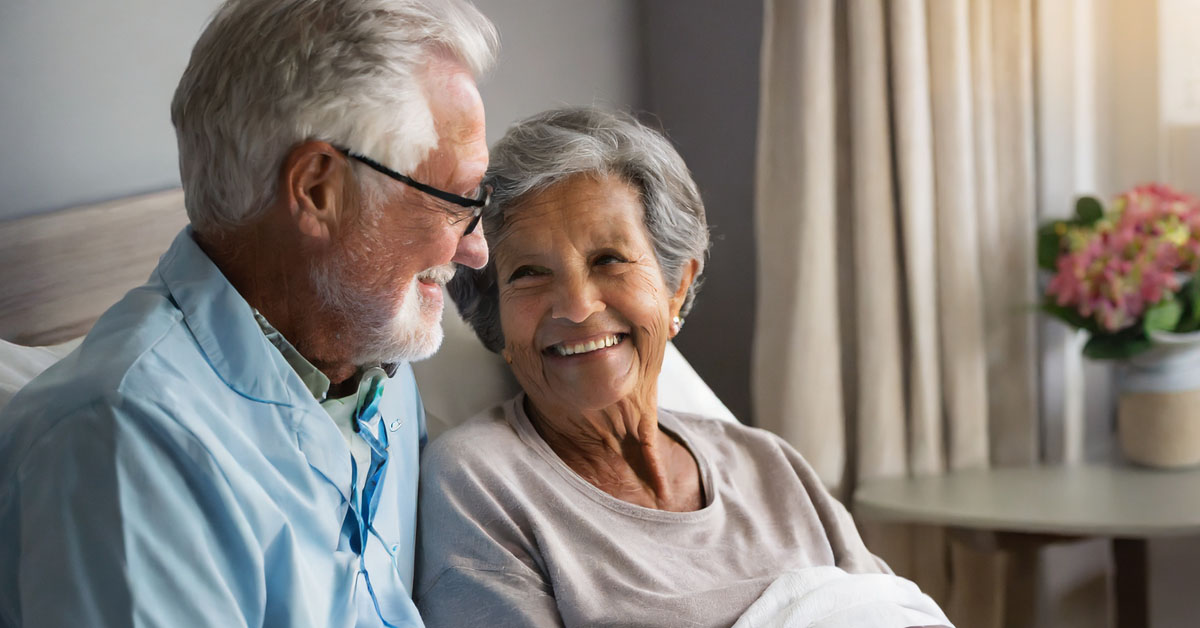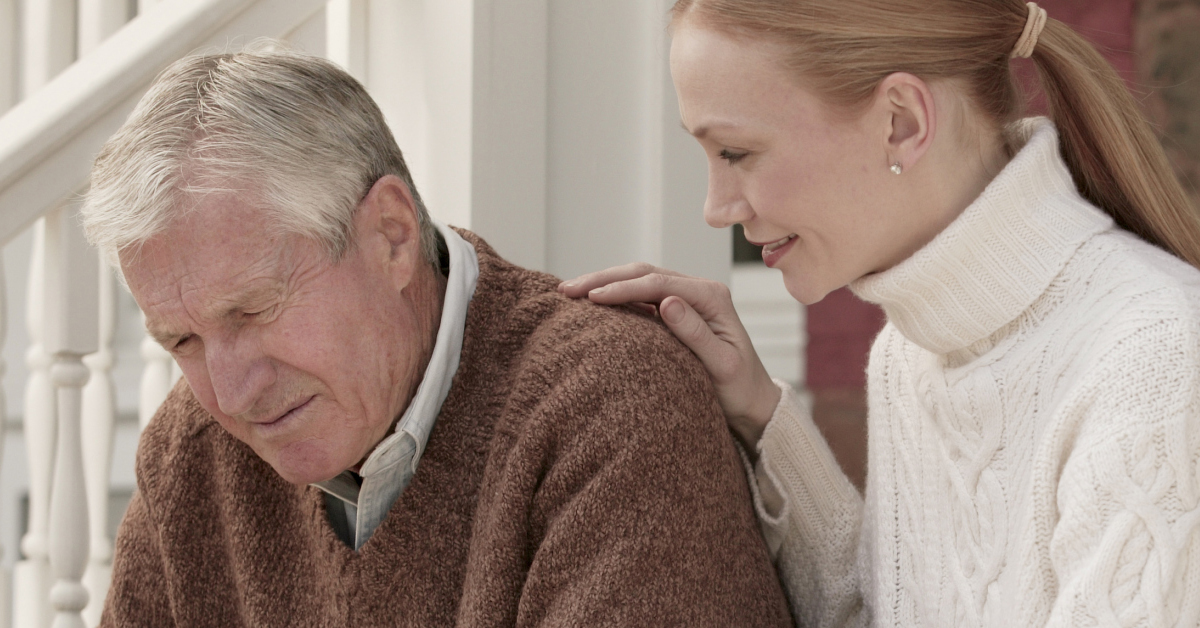
What Are the Benefits of Hospice?
Despite a growing popularity in recent decades and the fact that nearly half of all Americans receive hospice, hospice remains a mystery for many. What is it, how does it work, and most importantly, what good does it do?
What is Hospice?
Hospice is both a philosophy and a model of care. The philosophy is that people in their last months and days of life should be able to live with dignity, in comfort, and with their wishes being respected. This philosophy serves as the antithesis to the practice of pursuing heroic, curative measures, against a patient’s wishes and against all odds, even when those measures are more likely to harm the patient than cure the patient.
The hospice model of care usually consists of sending caregivers to a patient’s home, but inpatient facilities deliver some hospice. During the last six months of life, hospice agencies send nurses, therapists, aides, volunteers, and other caregivers to a person’s home. They provide medical, personal, and emotional support. Qualified agencies usually hold a state license or Medicare certification as a hospice agency specifically. Home health agencies or non-medical home care providers that serve terminally ill patients are not hospice providers. Medicare pays for most hospice care in the U.S. Medicare only pays for hospice if a patient is not pursuing curative measures for the terminal disease.
Hospice Improves Patient Comfort
Terminal diseases often cause high levels of fatigue, breathing pain, other bodily pain, depression, nausea, and other symptoms. The symptoms are so severe, that without hospice, they escalate month after month. People start spending more time in bed, often more than half a day.1 Hospice is allowed to use pain medications more freely, and hospice nurses and therapists are highly specialized in managing symptoms from terminal diseases. A study in the Journal of the American Medical Association found that, on average, when people enroll in hospice, the degree of life-restricting symptoms drops. Symptom burden drops to a level on par with what the patient was experiencing a year earlier.3
The decrease in symptom burden does not happen overnight. Research shows that symptom-relieving effects of hospice increase until reaching a maximum relief at about 90 days. Receiving hospice for three months or longer will do the best job of minimizing distressing, life-altering symptoms during a very important time of life.
Hospice Decreases Strain on Family Caregivers
People with terminal diseases can need a lot of help. There’s feeding, bathing, grooming, toileting, and doing the household chores that the dying person used to do. Moreover, caring for a terminally ill loved one is stressful. Caregivers worry if they are doing things correctly, worry about finances, worry about family politics, and more. Spousal caregivers of dying patients experience high risk of depression. That depression is known to last after a spouse passes and to last longer than the amount of time the caregiver was providing care.3-4
Fortunately, decreasing levels of caregiver demand is shown to lessen the risk of caregiver depression.5 Hospice decreases stress on family caregivers in a number of ways. Aides and volunteers help around the home. Staff coordinates other care such as supply delivery, equipment, and pharmacy services. Nurses provide in-home training for caregivers as well as direct medical care so caregivers can have peace of mind knowing that they are helping their loved ones well.
Hospice Improves Survival
The goal of hospice is not to affect survival or length of life. Hospice strives to improve quality of life during a very important time. However, it turns out that when people qualify for hospice, palliative care is good medicine. Research repeatedly shows, that when life expectancy is six months or less, people who choose hospice live longer than people who continue to pursue medical treatments.
What’s even more interesting is that hospice tends to improve survival for the spouses who weren’t even sick. Doctors have long recognized the phenomenon that mortality rates spike after the death of a spouse.6 It’s called the widowhood effect. Research suggests that hospice moderates the widowhood effect. People whose spouses received hospice have better survival rates than people who have spouses die without hospice.7 Experts suggest the improved spousal survival results from the emotional support hospice provides both before and after the passing of a spouse.
Hospice Saves Money for Medicare and for Families
From the time of diagnosis and for the rest of a person’s life, people who enroll in hospice cost Medicare about $8,600 less per person.1 The savings could be even greater. Longer hospice enrollment increases savings for Medicare. The $8,600 decrease is based on people receiving an average of only 11 days of hospice care. Savings triple when hospice enrollment spans 58 to 180 days – the recommended time in hospice.9
Even these numbers understate the true savings from hospice. With hospice, Medicare picks up more costs. The Medicare hospice benefit pays 100% of allowable charges with no deductibles, copays, or cost sharing of any kind. What’s more, Medicare hospice benefits pay for all the diagnosis-related services, supplies, equipment, and medications. In many circumstances, this can greatly reduce the financial burden on families.
Hospice Enables People to Die at Home
Seven out of ten Americans prefer to die at home. Sixty-five percent of people die in an inpatient facility instead. Hospice makes honoring this wish a good option in terms of quality of care, quality of life, and financially.
References
- Gill T, Han L, Leo-Summers L, et al. Distressing symptoms, disability, and hospice services at the end of life: prospective cohort study. J Am Geriatr Soc. 2017;
http://onlinelibrary.wiley.com/doi/10.1111/jgs.15041/epdf. - Cheraghlou S, Gahbauer E, Leo-Summers L, et al. Restricting symptoms before and after admission to hospice. The American Journal of Medicine. 2016; 129: 754.e7 – 754.e15.
- Grant M, Sun V, Fujinami R, et al. Family caregiver burden, skills preparedness, and quality of life in non-small-cell lung cancer. Oncol Nurs Forum. 2013; 40 (4): 337-346.
- Prokos A, Keene J. The long-term effects of spousal care giving on survivors’ well-being in widowhood. Soc Sci Q. 2005; 86(3): 664-682.
- Thielemann P, Conner N. Social support as a mediator of depression in caregivers of patients with end-stage disease. Journal of Hospice and Palliative Nur 2009; 11 (2): 82-90.
- Elwert F, Christakis NA. The effect of widowhood on mortality by the causes of death of both spouses. American Journal of Public Health. 2008 Nov;98(11):2092-8.
- Christakis N, Iwashyna T. The health impact of health care on families: a matched cohort study of hospice use by decedents and mortality outcomes in surviving, widowed spouses. Soc Sci Med. 2003; 57: 465-75.
- Obermeyer Z, Makar M, Abujaber S, et al. Association between Medicare hospice benefit and health care utilization and costs for patients with poor-prognosis cancer. JAMA. 2014; 312 (18): 1888-1896.
- Taylor D,Ostermann J, Van Houtven C, et al. What length of hospice use maximizes reduction in medical expenditures near death in the US Medicare program? Social Science & Medicine. 2007; 1466-1478.
- NHPCO Facts and Figures: Hospice Care in America. Alexandria, VA: National Hospice and Palliative Care Organization, April 2018.





